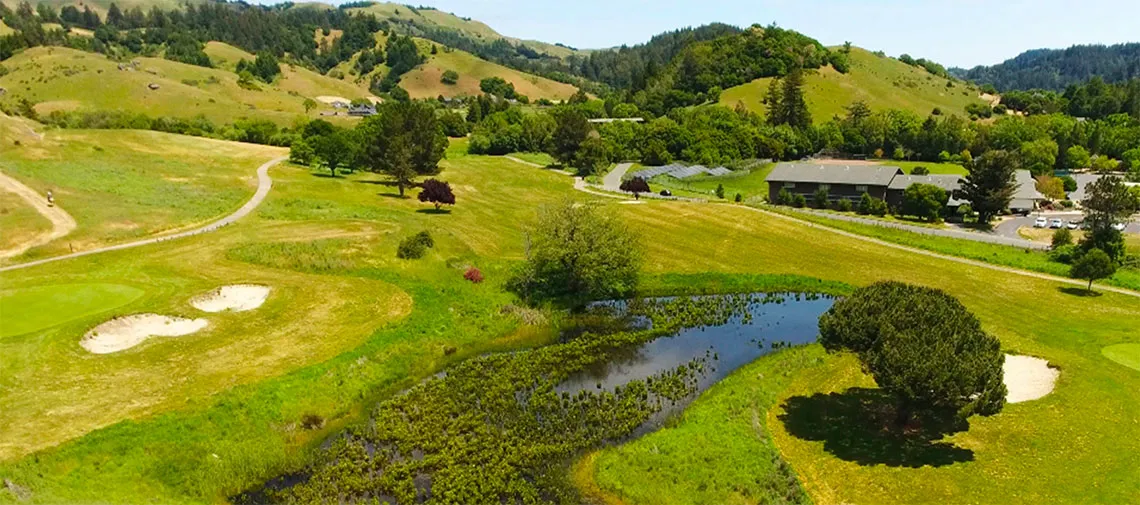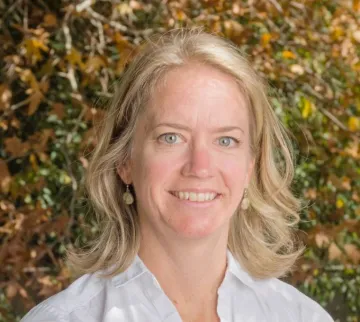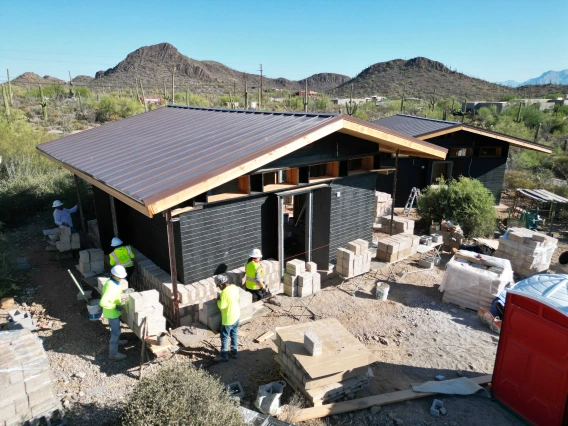How Can an Old Golf Course Fight Climate Change? Study by CAPLA Lecturer and Alumna Offers Insight for Bloomberg Article

The former San Geronimo Golf Course in Marin County, California. Photo by Sustainable Marin, courtesy Greenbelt Alliance.
A 2017 study by Kelly Cederberg ’13 MLA, an adjunct lecturer in landscape architecture at the University of Arizona’s College of Architecture, Planning and Landscape Architecture, has been cited by Bloomberg in a July 10, 2022 story on how the Trust for Public Land is converting an old golf course into a park and restored habitat for endangered wildlife.

Kelly Cederberg, Adjunct Lecturer in Landscape Architecture
Cederberg’s study, “Taking Golf Out of Golf Course: Trajectories to Concert Facilities to Parks and Open Space Preserves,” examines the ownership and funding of closed golf course facilities that have been turned into parks and open space preserves.
As noted in the Bloomberg article, Cederberg’s study found that 1,500 golf courses shut down between 2006 and 2016. Of the 365 defunct courses Cederberg analyzed, 28 had been redesigned as public parks or dedicated open space preserves.
In addition to preserving wildlife habitat, Cederberg’s study notes that “closed golf courses offer the potential for conserving large parcels of open space to fill community needs such as ecosystem enhancement, recreation… and stormwater detention.”
The Bloomberg article focuses on the former 18-hole San Geronimo Golf Course in Marin County, California, which “isn’t being developed so much as devolved to a state of nature to build resilience to climate change and revive endangered salmon while creating a new public park,” writes Todd Woody.
The Trust for Public Land purchased the 157-acre property for $8.85 million “and is in the midst of a years-long project to uncover long-buried creeks and rewild fairways into wildlife habitat that will link the restored landscape to four surrounding nature preserves,” writes Woody.
Cederberg’s goal with her study was to promote such conversions, providing examples of “how the preservation of land from closed golf courses to parks and open space is happening to provide a resource for golf course facility owners and other involved stakeholders who are facing this issue.”
Cederberg, who joined CAPLA in 2019, is an adjunct lecturer in landscape architecture whose research interests involve design retrofits in urban environments that enhance watershed health. Her current primary focus is on strategies for the redesign and repurposing of golf courses in order to conserve water, enhance wildlife habitat and provide amenities that promote health and community. At CAPLA, she teaches Design Studio I and Landscape Analysis and co-teaches the Interdisciplinary Urban Design Studio. Cederberg, who previously worked a landscape designer in New Mexico, is a 2013 graduate of CAPLA’s Master of Landscape Architecture program.



